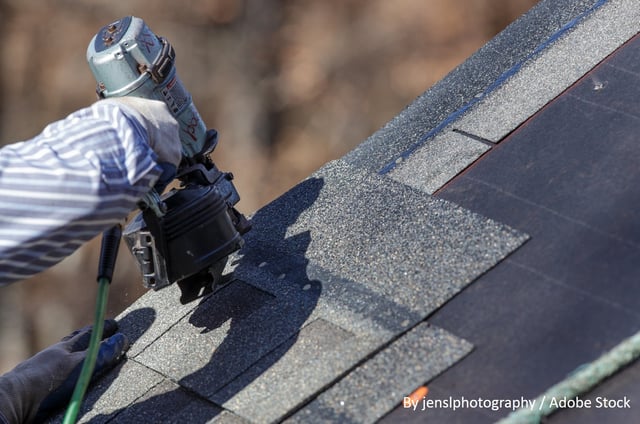
If you need a new roof, you may wonder what sort of underlayment is best. What is the difference between traditional felt and newer synthetic roof underlayment? Is the extra cost worth it?
What is the Purpose of Underlayment?
First, it is important to understand what underlayment can do, and what it can't. For many years, contractors have used tar-soaked felt fabric in between the plywood of the roof and the shingles.
The purpose of an underlayment layer is:
- To provide a non-slip walking surface as a protection for roof installers
- To protect the roof from rain or other moisture in case there is rain before the roof is fully installed
- To act as a water barrier in the case of roof damage in a storm
- To prevent the leaching of chemicals from asphalt shingles onto the roof deck
- To add a layer of protection from heat and sound
Differences Between Felt and Synthetic Roof Underlayment
Felt underlayment is made by saturating felt fabric with asphalt. This low-cost material, whether #15 or #30, can do an adequate job of protecting the roof as the shingles or metal roof is installed. Although more costly than felt, synthetic underlayment is a superior product because it is:
- Lighter
- Thinner
- Not as slippery
- Not as heavy on the roof
- Degrades more slowly
- Tolerates higher heat
Benefits of Synthetic Underlayment
Synthetic roof underlayment offers benefits to both the roofing contractor and the homeowner.
Contractors like the fact that synthetic underlayment:
- Is easier to install
- Is less of a safety hazard because it's not as slippery and heavy as felt
Homeowners benefit by the quicker installation, but also because synthetic underlayment:
- Doesn't add a lot of weight to the roof, which is important in light of the fact that dimensional shingles and other, heavier roofing materials add some weight to the roof
- Lasts significantly longer to protect the roof in the case of lost or damaged shingles
- Will not crack, rot, or buckle
- Provides better heat resistance in hot climates like Central Texas
Proper Installation is Key
Properly installed, both felt and synthetic underlayment do their main job of protecting decking, and, of utmost importance, workers while your roof is being installed.
Whether you choose felt or synthetic depends on your budget and the type of roof you have selected. What is more important than which underlayment you choose is making sure that your roofing contractors are experienced when it comes to:
- Choosing the best, most cost-effective underlayment for your roofing situation
- Knowing the weather-based needs of the different types of roofs in the Austin area
- Installing roofs correctly and safely
Choose Experienced Roofing Contractors
Are you weighing the pros and cons of underlayment for your new roof? If so, contact an experienced Central Texas roofer like Longhorn Roofing, which can walk you through the best options.



